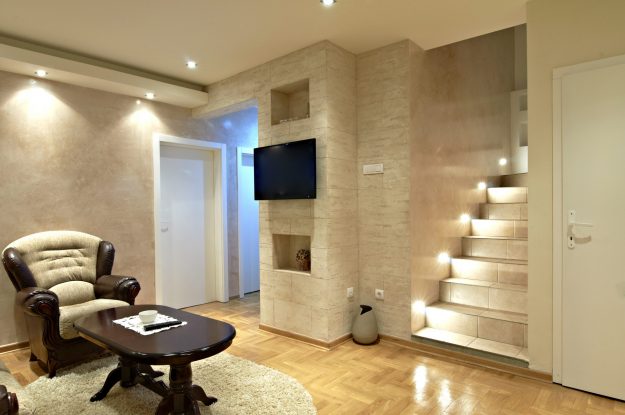Elements of Interior Design | 3 Lighting Design Tips That Transform Any Space.

If you’ve been wanting to learn interior design tips for your home or business, you may be interested to know that there are many different types of lighting.
Depending on what kind of lighting you choose, a room or space will have a completely different look or feel.
Transform Any Space with These 3 Core Elements of Interior Design

The three main elements of interior lighting design are ambient lighting, task lighting, and accent lighting. Each can be used together to make your space beautiful!
Check out these interior lighting tips for choosing the right mood for any room or office.
1. Ambient Lighting

Anyone who understands basic interior design principles knows that ambient lighting, or general lighting, provides a room with overall illumination. This means that you can see most of the room no matter how much light might be coming in through the windows.
Many people believe that ambient lighting is all you need to do for any particular space. But creating a real mood to the room cannot be done with ambient lighting alone.
Some great examples of ambient lighting include:
- Chandeliers and other ceiling fixtures
- Light kits on ceiling fans
- Track lighting
- Recessed ceiling lights
- Torchieres
- Wall sconces providing enough light to do more than spotlight an area
If you need overall lighting for your home or business, check out some of these fantastic ceiling fixtures.
2. Task Lighting

As the name suggests, task lighting can be implemented to better help one perform specific tasks such as reading, grooming, studying, preparing a meal, or working. Think of the lamp atop your desk, the pendant over your kitchen island, or the vanity light above your bathroom mirror.
Task lighting can be used in conjunction with ambient lighting to create dimension in a space. Or, it can be used alone to filter out distractions while performing a particular task.
In any case, task lighting should provide a greater level of illumination over your task space than ambient lighting otherwise would alone.
Common fixtures that provide task lighting include chandeliers, recessed lighting, ceiling-mounted fixtures, sconces, and floor lamps.
3. Accent Lighting

Accent lighting, or design lighting, is the third layer of lighting in a space. It calls attention to another object, creates drama, or adds a third level of the desired dimension to a space.
For example, many choose to highlight an art piece by positioning a bright light above the piece. Some, on the other hand, will choose to position accent lighting in such a way that their space will be perceived as larger or taller.
Fixtures don’t just illuminate another statement piece; they can also make a decorative statement in a space. This is another type of accent lighting.
As a general rule of thumb, accent lighting should be at least three times brighter than the space’s ambient light in order to achieve its purpose.
Now Apply These Elements of Interior Design to Your Home or Business

Whether you’re interested in DIY interior design, or just want to freshen up a room, lighting is the way to go. It’s simple, striking, and can change the entire mood with just a couple of quick updates.

